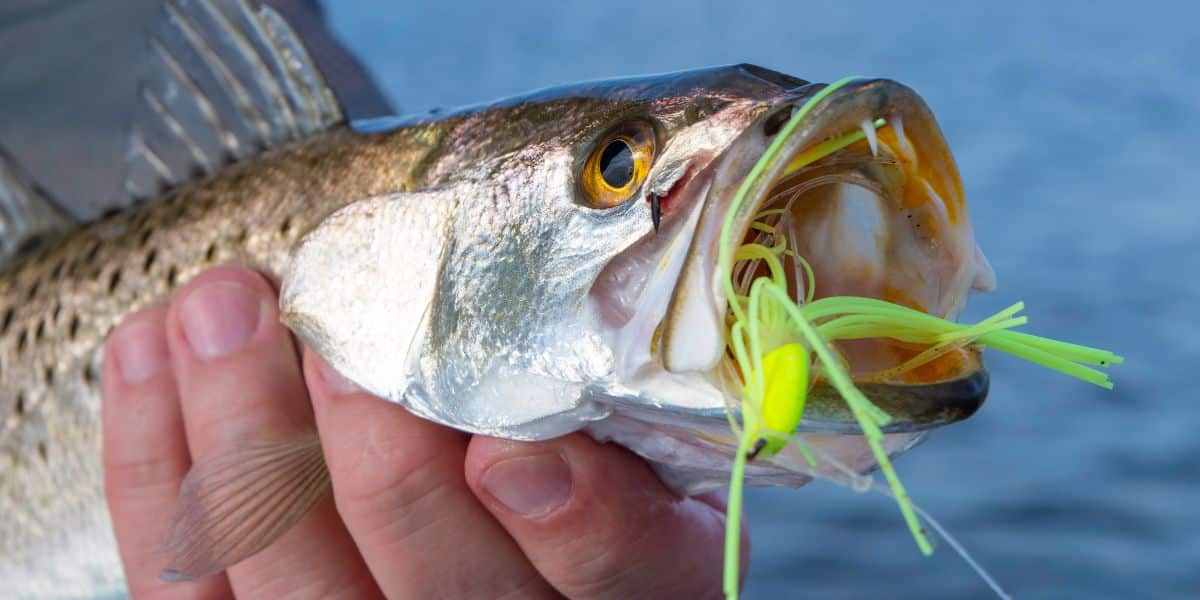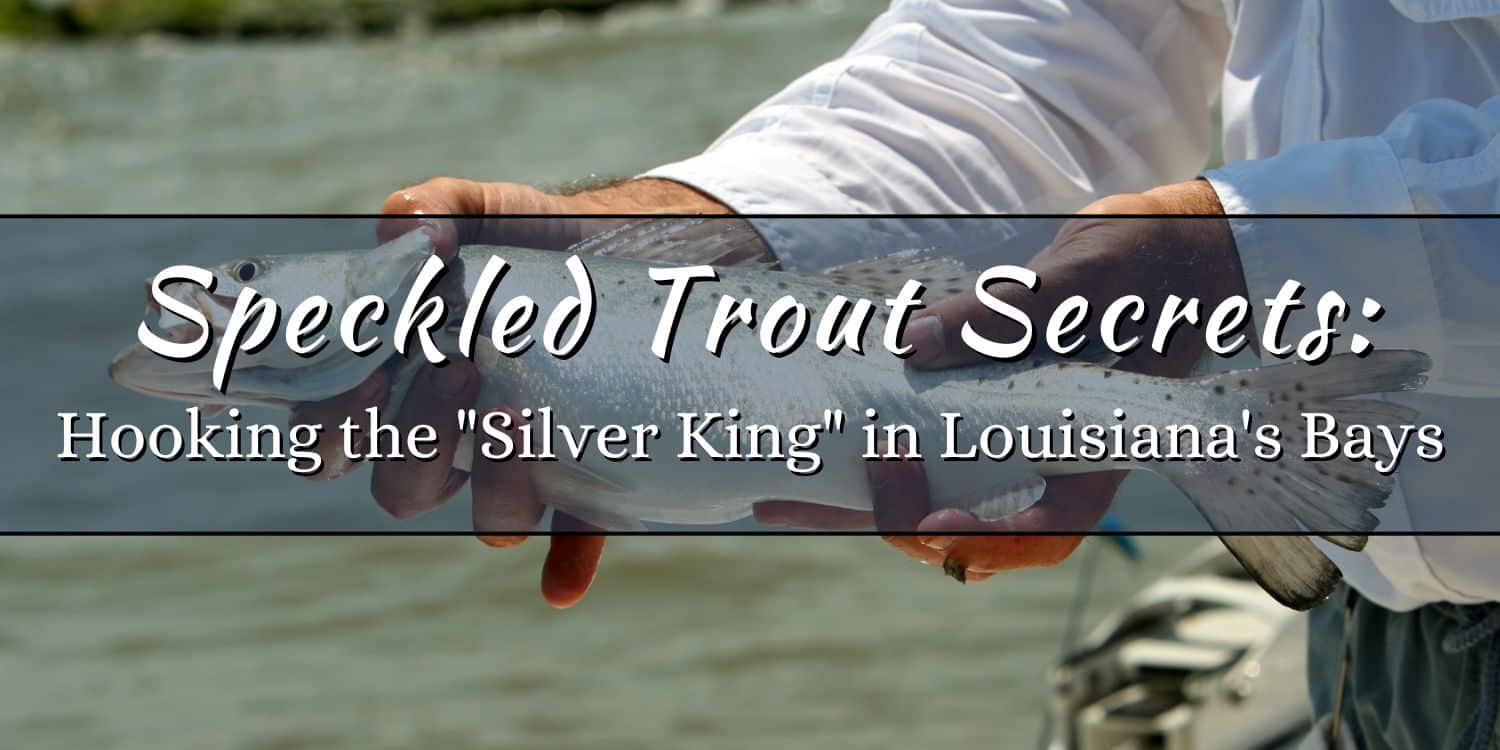There’s a moment every Louisiana angler lives for. It’s not just the salty air or the gentle rock of the boat in the marsh. It’s the sudden, electric thump that travels up your line, a tell-tale sign that you’ve fooled one of the most sought-after predators in our coastal estuaries. A split-second later, your drag screams as a flash of silver and black spots erupts from the water, shaking its head violently. You’ve just hooked into the “Silver King” of the bays—the speckled trout.
Here in Louisiana, the speckled trout (or “spec”) is more than just a fish; it’s a cornerstone of our culture and a true test of an angler’s skill. Whether you’re a seasoned pro or planning your first trip, the thrill of a successful day of inshore fishing for these magnificent creatures is second to none. But getting them to bite consistently requires more than just luck. It requires understanding their habits, their appetites, and the gear you need to bring them to the boat. This guide will unlock those secrets, from the right tackle to the seasonal patterns that put you in the right place at the right time.
Gearing Up for Success: Rods, Reels, and Line
Before you can make the perfect cast, you need the right tools for the job. While you can catch a trout on just about anything, having a balanced setup will dramatically increase your sensitivity, casting distance, and, ultimately, your catch rate. For speckled trout, think light and sensitive.
- Rod: The undisputed champion for Louisiana trout fishing is a 7-foot, medium-light to medium power rod with a fast action tip. The length allows for long, accurate casts across the flats, while the fast action gives you the sensitivity to feel a subtle bite and the backbone to drive the hook home.
- Reel: A 2500 or 3000-size spinning reel is the perfect match for this setup. It’s light enough to cast all day without fatigue and has a smooth drag system to handle the aggressive runs of a big “gator” trout. While some experienced anglers prefer baitcasting reels for specific techniques, a quality spinning reel is the most versatile tool for the job.
- Line & Leader: This is where many anglers miss the mark. Spool your reel with 10 to 15-pound braided line. Braid has zero stretch, which means you can feel every bump and tap, and its thin diameter lets you cast a mile. However, it’s highly visible underwater. The secret is to finish your setup with a 2-foot section of 20-pound fluorocarbon leader. Fluorocarbon is nearly invisible to fish and provides crucial abrasion resistance against sharp oyster shells. Connect your braid to your leader with a reliable knot like a Double Uni or an FG Knot. This combination gives you the best of both worlds: sensitivity and stealth.
The Art of Deception: Mastering Artificial Lures
There’s a special kind of satisfaction that comes from fooling a fish with a piece of plastic or wood. Artificial lures allow you to cover more water and actively hunt for fish. Mastering a few key types will make you a much more versatile and successful angler.
- Soft Plastics: The undisputed workhorse in any Louisiana trout angler’s tackle box is the soft plastic paddle tail grub. Rigged on a 1/4 oz or 3/8 oz jighead, it can be fished at any depth. The key is the retrieve: cast it out, let it sink to the desired depth, and then use a “hop-and-drop” motion. A sharp lift of the rod tip makes the tail kick, and the strike almost always comes as the lure flutters back down.
- Color Matters: In stained or murky water, go with bright, eye-catching colors like chartreuse, pink, or black with a chartreuse tail. In clear water, switch to more natural presentations like avocado, motor oil, or pearl white to mimic local baitfish.
- Topwater Lures: For pure heart-stopping excitement, nothing beats a topwater strike. Lures like the Heddon Super Spook Jr. or MirrOlure She Dog are legendary for a reason. The best time is during low-light conditions, like the first hour of daylight and the last hour before dusk. Use a “walk-the-dog” retrieve, a steady cadence of rhythmic twitches with your rod tip down that makes the lure glide from side to side. Be prepared, the explosion is violent and unforgettable!
- Suspending Twitch Baits: When the water cools down in the fall and winter, trout can become lethargic. This is when a suspending hard bait like a MirrOlure MirrOdine or a Paul Brown Corky shines. These lures are designed to be twitched down a few feet and then suspend perfectly in the strike zone. The technique is simple: twitch, twitch, pause. That pause is critical; it gives a sluggish trout the perfect opportunity to strike.
The Real Deal: Live Bait Tactics
Sometimes, you just can’t beat the real thing. When the bite is tough or you’re specifically targeting a trophy “gator” trout, live bait is the ultimate ace up your sleeve. Speckled trout are opportunistic predators, and a struggling baitfish presented correctly is often a meal they can’t refuse.
- Top Live Baits:
- Live Shrimp: The universal crowd-pleaser. Every inshore species eats shrimp, and trout are no exception. They are your go-to bait year-round.
- Croakers & Pinfish: If you want to target bigger trout, use bigger bait. A live croaker hooked through the back makes a distinct “croaking” sound underwater that calls in monster trout from a distance.
- Mullet: Especially during the fall mullet run, a small, lively finger mullet is one of the best baits you can throw.
- Rigging and Presentation:
- Under a Popping Cork: This is the classic Louisiana method. The cork’s “pop” when you jerk the rod mimics the sound of other fish feeding, attracting curious trout. A live shrimp or croaker suspended 2-3 feet below is an irresistible offering.
- Free-lining: In calm, clear water, sometimes a cork can be too much commotion. Simply hooking a live shrimp or mullet through the horn or lips on a light hook and letting it swim naturally is a stealthy and incredibly effective technique.
- Carolina Rig: When trout are holding in deeper water or heavy current, a Carolina rig will get your bait down to them. This rig places a weight above a swivel and leader, allowing the bait to swim freely and naturally just above the bottom, right in the strike zone.

Cracking the Code: Seasonal Speckled Trout Patterns
The final secret to consistently catching speckled trout is knowing where they’ll be and when. Trout are constantly on the move, following their comfort zone and food source. Understanding their seasonal migration is the key to eliminating dead water and finding fish year-round.
- Spring (March-May): As the marshes warm up, trout transition from their deep winter holes. Focus on primary points, oyster reefs, and channel edges in the major bays. They are hungry and looking to bulk up before the summer spawn. Live shrimp under a popping cork is a deadly tactic as the first brown shrimp of the year appear.
- Summer (June-August): With the summer heat settling in, it’s all about finding cooler, oxygenated water. Look for trout on deeper rigs in the open bays, along current lines, and in deeper holes. The bite is often best at dawn and dusk. This is also the prime time to fish live croakers for a true trophy “gator” trout. Don’t be afraid to fish at night under the lights for some fast and furious action.
- Fall (September-November): This is the magic season every Louisiana angler dreams of. As temperatures cool, a mass exodus of shrimp and baitfish pour out of the marsh, and trout go into a feeding frenzy. Look for diving birds. They are a dead giveaway for schools of feeding trout below. Nearly any technique will work, from topwater plugs to soft plastics and live bait. The action can be non-stop.
- Winter (December-February): When cold fronts push through, trout seek refuge in deeper, more stable water. Concentrate your efforts in the backwater bayous and dead-end canals with deep holes. The key is to slow everything down. A suspending twitch bait with a long pause or a soft plastic crawled slowly across the bottom is the ticket to getting these lethargic fish to bite.
Your Adventure Awaits
From the subtle thump of a jig bite in a deep canal to the explosive topwater strike over an oyster reef, speckled trout offer a challenge for every angler in every season. By balancing your tackle, mastering a few trusted lures and baits, and understanding their seasonal movements, you can turn a good day of fishing into a great one. The Louisiana marsh is a world-class fishery, and its “Silver Kings” are waiting.
Ready to stop reading and start fishing? As you plan your trip, it’s important to be a steward of our incredible natural resources, so always check the current LDWF saltwater fishing regulations for the latest size and bag limits. The best way to learn the secrets of the marsh and take the guesswork out of your next trip is to experience it firsthand with an expert.
Book a charter with Captain Troy Wetzel today and experience the inshore fishing adventure of a lifetime!




